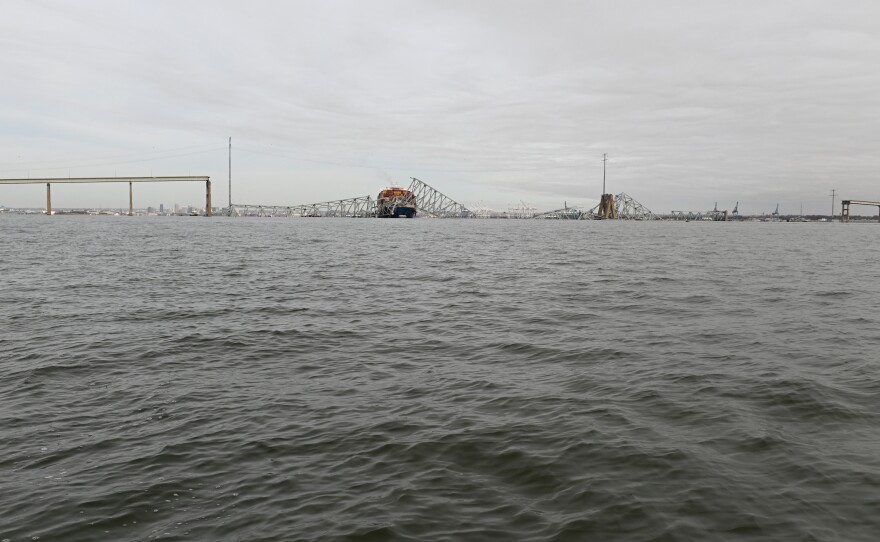The U.S. Coast Guard established a temporary, alternate channel for commercially essential vessels near the fallen Francis Scott Key Bridge in Baltimore, part of a phased approach to opening the main channel leading to the vital port, officials said.
Crews have begun the complicated work of removing steel and concrete at the site of the bridge’s deadly collapse into the Patapsco River after a freighter collision last week. On Sunday, dive teams surveyed parts of the bridge and checked the ship, and workers in lifts used torches to cut above-water parts of the twisted steel superstructure.
The captain of the port is preparing to establish the temporary channel on the northeast side of the main channel. It will have a controlling depth of 11 feet (over 3 meters), a horizontal clearance of 264 feet (80 meters) and a vertical clearance of 96 feet (29 meters), officials said. A video released Sunday showed the Coast Guard dropping buoys in the water.
“This will mark an important first step along the road to reopening the port of Baltimore,” Capt. David O’Connell, the federal on-scene coordinator of the response, said in a statement Sunday night. “By opening this alternate route, we will support the flow of marine traffic into Baltimore.”
On Monday, the Small Business Administration is opening a center in Dundalk, Maryland, to help small businesses get loans to help them with losses caused by the disruption of the bridge collapse.
The bridge fell as the crew of the cargo ship Dali lost power and control on March 26. They called in a mayday, which allowed just enough time for police to stop vehicles from getting on the bridge, but not enough time to get a crew of eight workers off the structure.


Comments are closed